Pad Printing Machine Brands: Global Competition & China’s Path Forward
This article systematically studies the competitive landscape of global pad printing machine brands and the path for Chinese enterprises to break through. As a core device for special printing, pad printing machines are widely used in electronics, automotive, medical, and other fields. By 2025, the Chinese market size is expected to exceed 3.5 billion yuan, with a compound annual growth rate (CAGR) of 8.5%, and the penetration rate of intelligent equipment continues to increase. Tefisen has built a one-stop solution from the main machine to steel plates, pads, and inks through a "standardized equipment + localized consumables + collaborative technology" approach across the entire industry chain, successfully enhancing its international competitiveness. In the future, Chinese pad printing machine brands need to focus on intelligence, green development, and service ecosystems to achieve a value leap from "manufacturing" to "intelligent manufacturing."

I. Industry Background and Market Status
• Definition and Application Fields of Pad Printing Technology
Pad printing technology, as an efficient special printing process, transfers ink from an etched steel plate to the surface of a substrate via a silicone pad, enabling high-precision pattern printing on curved and irregular parts (such as mobile phone casings, cosmetic bottles, automotive buttons, and medical devices). Its technical core lies in meeting the printing needs of multi-material and complex structural surfaces, making it an indispensable link in industrial manufacturing. In the global pad printing equipment market, China dominates with a complete industrial chain and cost advantages. Europe and America focus on high-end customized needs, while the Southeast Asian market has become a potential export target due to manufacturing industry transfer.
• Market Size and Growth Trends
According to the "Annual Report on China's Printing Equipment Industry," the Chinese pad printing machine market size is predicted to exceed 3.5 billion yuan by 2025, with a CAGR maintained at around 8.5%. The growth drivers mainly come from the upgrading of the consumer electronics industry (such as printing for smart wearable devices), the increasing demand for identification of automotive electronic components, and the standardized requirements for medical device traceability code printing. Additionally, the automation trend promotes the increase in the proportion of multi-color pad printing machines and high-precision models. In 2024, the penetration rate of intelligent equipment among pad printing machine brands has exceeded 40% and is expected to reach 50% in 2025.
II. Core Brand Classification and Competitiveness Analysis
Global pad printing machine brands can be divided into two major camps: international brands characterized by technological leadership and domestic brands known for cost-effectiveness and service networks. The following table compares the competitive dimensions of major brands:
| Brand Name | Country/Region | Technical Features | Target Market |
|---|---|---|---|
| Inkcups | USA | Digital control, quick color change system | High-end industry, customized needs |
| Tampoprint | Germany | High-precision overprinting, automation integration | Automotive, medical devices |
| Teca-Print | Switzerland | Environmentally friendly ink adaptation, modular design | Electronic components, precision instruments |
| Comec Italia | Italy | Multi-functional all-in-one machine, UV curing technology | Luxury packaging, daily chemicals |
| Jianyi | China | Standardized and customized machines, global service network | Small and medium-sized manufacturing enterprises, general fields |
| Tefisen | China | Standardized and customized models, global service network | Export-oriented industries, Southeast Asia |
• Competitiveness Analysis of International Brands
International pad printing machine brands hold an advantage in the high-end market due to their technological accumulation. For example, Germany's Tampoprint's servo drive system can achieve a printing accuracy of ±0.03mm, suitable for automotive dashboard character printing; the Hydra series from Inkcups in the USA supports one-click color change, reducing downtime by 30%. However, their equipment prices are usually 2-3 times those of domestic brands, and the after-sales service response cycle is long, making it difficult to cover the needs of small and medium-sized enterprises in China.
• Development Path of Domestic Brands
Domestic pad printing machine brands, represented by Jianyi and Tefisen, have quickly occupied the market through cost control and channel sinking strategies. Jianyi Machinery reduces production costs through modular production. Its standard model price range is 20,000 to 50,000 yuan, covering 60% of the domestic mid-to-low-end market. Tefisen provides multi-language technical support by establishing offices in Southeast Asia and a technology center in Europe, with the export business share increasing from 25% in 2020 to 45% in 2023.
III. The Necessity of Brand Development for Domestic Enterprises
Breaking through the Dilemma of Homogeneous Competition
Although domestic pad printing machine production capacity accounts for 70% of the global total, the industry profit margin was only 8.2% in 2023. Low-price competition has led to insufficient R&D investment. Brand development can enhance premium capabilities through technological differentiation (such as the "intelligent calibration system" launched by Tefisen). Its high-end model price is 40% higher than the standard model, yet it still maintains a 15% market growth rate.
Adapting to the Upgrading Needs of the Industrial Chain
Head manufacturing enterprises such as Huawei and BYD require suppliers to be equipped with a full-process traceability system, prompting pad printing machine brands to strengthen data management functions. The customized MES system interface developed by Jianyi Machinery for consumer electronics customers enabled it to successfully enter the Apple supply chain.
Core Barrier of Global Competition
According to the General Administration of Customs data, the export value of Chinese pad printing equipment increased by 18% year-on-year in the first half of 2024, but the European and American markets have strict requirements for CE and UL certifications.
IV. Risks and Challenges on the Path to Brand Development
• Pressure for Technological Catch-up: Domestic pad printing machine brands still rely on imports for core components (such as servo motors). Japan's Panasonic servo system accounts for 25% of the total cost.
• Talent Shortage: There is a 30% gap in compound talents in the intelligent manufacturing field. Tefisen invests 5% of its revenue annually to jointly establish training bases with universities.
• Financial Pressure: Brand building requires long-term investment. Jianyi Machinery's brand promotion expenses increased by 50% year-on-year in 2023, but the short-term benefit conversion rate was only 12%.
• International Trade Fluctuations: The EU's anti-dumping investigation on Chinese printing equipment in 2024 increased export costs for some enterprises by 10%.
V. Tefisen Builds Core Competitiveness through Industry Chain Collaboration
Tefisen, as a leader among Chinese pad printing machine brands in implementing an international strategy, has not simply focused on equipment exports in its globalization journey but has embarked on a systematic project based on deep standardization and aimed at providing comprehensive solutions. The company deeply recognizes that the competitiveness of a strong pad printing machine brand depends not only on the performance of the main equipment but also on its control over the entire printing process chain, including the crucial peripheral consumables—steel plates, pads, screens, and inks. Tefisen's global layout is carried out in stages and systematically around this core idea.
1. Standardization of Production Capacity and Quality Control: The Foundation for Building Reliable Equipment
At this stage, Tefisen's core task is to consolidate the product foundation and ensure the reliability and consistency of its equipment as a pad printing machine brand. The company has invested heavily in building standardized modern production lines and has carried out platform-based and modular design for core models.
• Equipment Standardization: Unified key interfaces, electrical standards, and software protocols of the equipment. This improves compatibility by more than 50% when different models of pad printing machines are maintained, upgraded, and integrated with automated production lines. This measure stabilizes the average delivery cycle within 15 days, providing a guarantee for quickly responding to global orders.
• Standardization of Performance Parameters: Established strict factory inspection standards to ensure that every outbound device maintains consistency in key indicators such as printing accuracy (stable at ±0.02mm) and repeat positioning accuracy, laying the foundation of trust for Tefisen as a pad printing machine brand in the international market.
2. Localization of Services and Consumables: Building an Integrated "Equipment + Consumables" Service Ecosystem
Tefisen realized that the main equipment is just the starting point of customer value. The real competitiveness lies in the ability to quickly provide high-quality consumables and technical services in the local market, forming a closed-loop ecosystem. Therefore, the technical service centers established in Vietnam and India have functions far beyond equipment maintenance.
• Localization of Consumable Support: These service centers are also small consumable warehouses and production bases, capable of providing nearby:
o Pad Printing Pads: Provide custom silicone pads of different hardness, shapes, and sizes according to the substrates commonly used by local customers (such as plastic toys in Vietnam and metal accessories in India) to ensure the best ink transfer effect.
o Etched Steel Plates: Set up small-scale steel plate etching lines, which can complete the production of high-precision steel plates and deliver them within 48 hours according to the patterns provided by customers, greatly shortening the production preparation time for customers.
o Screen Production: Provide matching high-tension screen production services for customers requiring thick-film printing.
• Comprehensive Service Capability: This "equipment + consumables + process support" one-stop service model enables Tefisen to provide customers with a "turnkey" project. When customers purchase Tefisen's pad printing machine brand equipment, they get not just a machine but a complete set of verified and immediately usable printing solutions. This is the key reason for its 92% customer satisfaction rate.
3. Collaboration of Technology and Supply Chain: Strengthening the Advantage of the Entire Industry Chain
After consolidating basic services and consumable support, Tefisen began to extend upstream and strengthened its comprehensive strength in the field of core consumables through technological cooperation and independent innovation.
• Core Technology Cooperation: Collaborating with companies such as TOYO and CARPOLY, not only focusing on low-carbon technology for main equipment but also delving into the field of environmentally friendly consumables. The jointly developed low-VOCs (volatile organic compounds) water-based inks and solvent-based inks help customers easily cope with increasingly strict environmental regulations in markets such as the EU.
Through this comprehensive approach of "taking the main equipment as the leader, core consumables as the guarantee, and process support as the link," Tefisen has successfully transformed from a simple equipment supplier to a trusted partner for industrial identification solutions. This not only greatly enhances customer stickiness and brand premium capabilities for Tefisen as a pad printing machine brand but also builds a difficult-to-replicate moat for it to compete on the same stage as top international brands in the global market.
Chinese pad printing machine brands are transitioning from "scale expansion" to "value creation." Future competition will focus on intelligence (such as AI visual positioning), green development (water-based ink technology), and service ecosystem construction. With industrial upgrading and globalization deepening, enterprises with technological accumulation and brand appeal are expected to reshape the market pattern and achieve a leap from "manufacturing" to "intelligent manufacturing."

